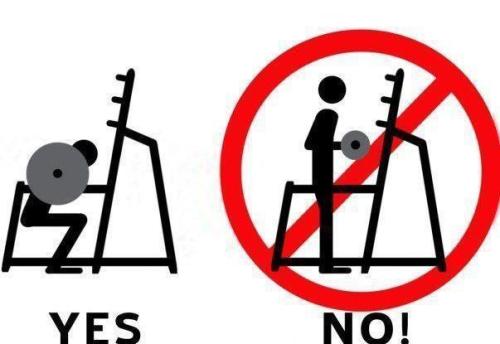 |
| Source |
Muscle is built specifically while fat is burned generally.
So, if you want to build muscle in your legs, you have to do leg exercises. If you want to build muscle in your arms, you have to do exercises that work those muscles. That's why a strength building regimen has to be comprehensive for the entire body, working as many different muscles as possible. So, you can understand the logic that says we should find exercises that specifically work each and every muscle of the body and then make sure we do them all, right? Well, no.
First, allow me a brief tangent before I explain why. In a past post, I focused on the second half of that statement to explain why crunches would not burn through the fat stored in your stomach. That can be found here.
So, back to the task at hand. Why are isolation exercises like bicep curls a waste of time more often than not?
The body is built for five basic movements: (1) to push ourselves away from the ground, (2) to lift things up, (3) to push things away from us, (4) to pull things towards us, and (5) to pull ourselves up. Virtually every muscle in the human body is used to perform one (if not more than one) of these motions. Let's look at each one (fitness enthusiasts bear with me since I'm leaving the fitness lingo out of this):
- Pushing the body away from the ground: This is the basic squat. The thigh muscles (quadriceps) move the knees, the backs of the legs (glutes and hamstrings) move the hips, and the calves move the ankles.
- Lifting things up: Weight lifters, think of a deadlift. The hamstrings and glutes move at the hips.
- Pushing things away: Imagine a push up. The chest muscles (pectorals) move the upper arm forward while the backs of the arms (triceps) extend the arms.
- Pulling things in: Think of a row. The upper back muscles (trapezius and latissimus dorsi) pull the shoulder blades in and the upper arm towards the body while the biceps flex the arms.
- Pulling ourselves up: Imagine a pull-up or, more commonly in the gym, a machine pull-down. The back muscles pull the arms down towards the rest of the body and the biceps flex the arms.
So, the bicep curl isolates the bicep while the row works the upper back, lower back, shoulders, and (oh, yeah) the biceps. Now, to get to the point, here's why I rarely do arm curls but instead do something like a row or pulldown:
- By doing larger body movements that use multiple muscle groups, you are training these muscles to work together in balance. This is how the body is designed to work. Training in a way that does not encourage this balance causes muscle imbalances and can make you more likely to get injured.
- If you actually want to use this strength away from the gym, using larger movements ensures that you won't have any unforeseen weaknesses that prevent you from performing. By doing a weighted step-up instead of isolated quadricep, glute, and calf exercises, you are ensuring that your body is ready to, say, carry heavy thing upstairs. In this example, the weighted step-up builds the lower back and trunk stabilizer muscles you'll need to perform outside the gym.
- You can pack more muscle into the entire body by working larger muscle groups. The small amount of muscle added to the biceps through biceps curls is a far cry from the mass you can add to the larger back muscles with rows and pull-downs. By adding plenty of extra muscle mass onto the body, you will do a better job of burning through your fat storage and keeping you lean (or making you lean). Considering how many of us are trying to trim fat and be more lean, this is probably the most important of the three.